Summer in a can
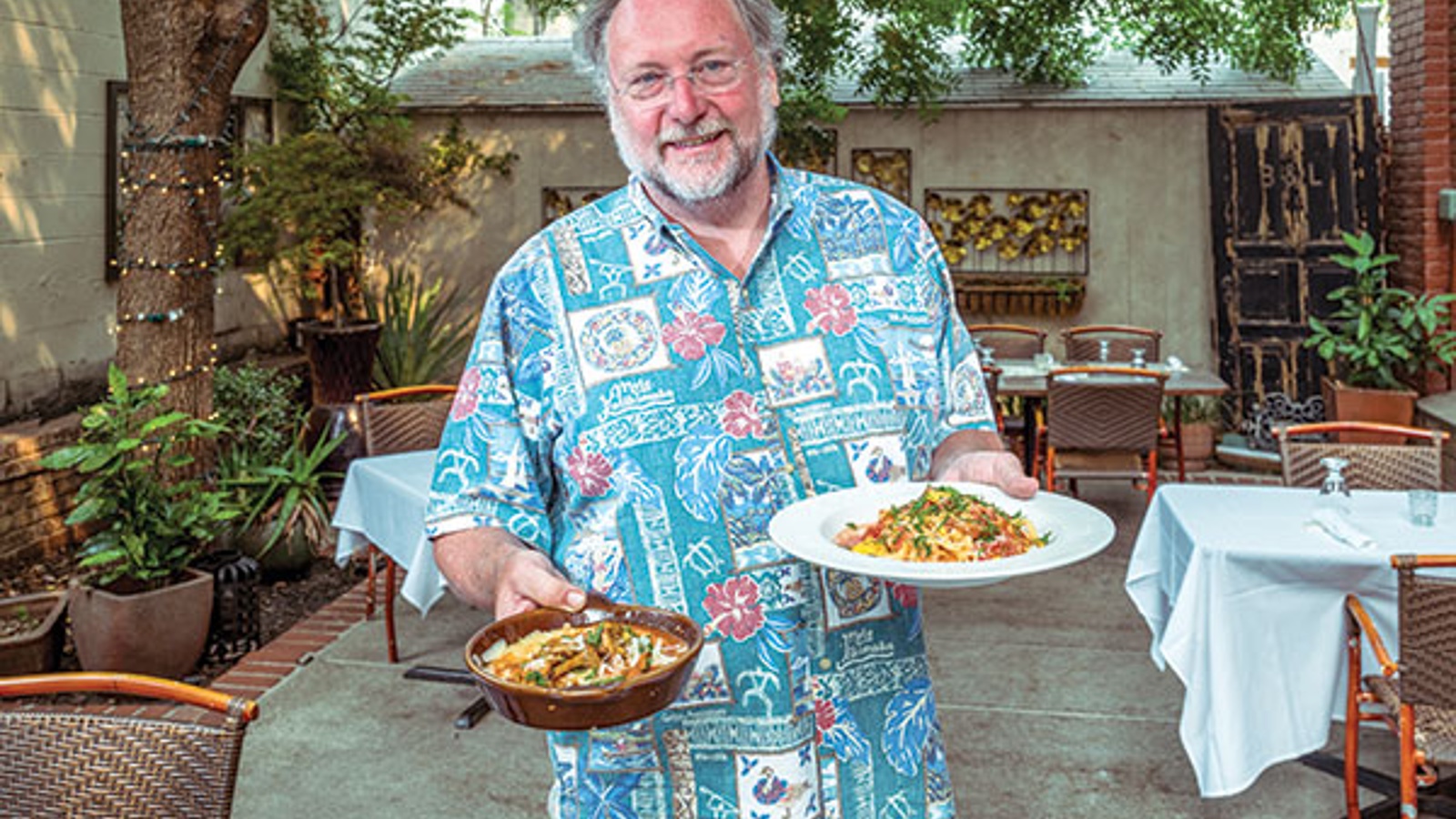
November/December 2021 California Bountiful magazine
Story by Kevin Hecteman
Restaurant photos by Manny Crisostomo
Farm photos by Tomas Ovalle
The processing tomato is as versatile as your imagination
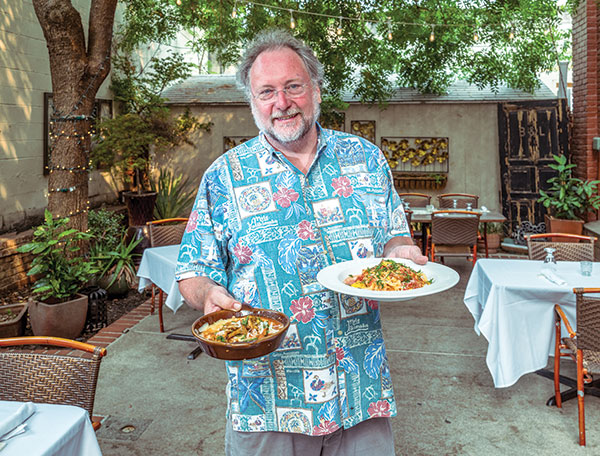
To the world, it's a can of tomatoes. To Patrick Mulvaney, it's a blank canvas.
"The beauty of the tomato is that it's not just one thing," said the owner of Mulvaney's B&L restaurant in Sacramento. "I love canned tomatoes as a chef because there's so much variety in what you can get out of it."
That begins with his tomato sauces, whose recipes vary with the seasons. Mulvaney likes to start by pureeing what he calls the aromatics—the onions, garlic and herbs—with olive oil, then letting the paste "toast" on the stovetop before adding canned, chopped tomatoes. For summer menus, he simply lets the mixture come to a boil before serving. For winter, he adds flavorings like Parmesan rind, ham hock or olives and simmers the sauce for "an hour or even all day" for a richer flavor.
Mulvaney tried making sauce out of canned tomatoes for the first time in college, thanks to a roommate with an Italian grandmother.
"He pulled out a can of whole peeled tomatoes," Mulvaney recalled. "I had no idea what to do with them. He said, 'All right, let's go.' And he walked me through the process of how to make your own tomato sauce. I saw the difference of what you can control and make your own."
That basic structure continues to inform Mulvaney's cooking and also provides insight into the culinary potential packed in a can of tomatoes. For him, uses extend well beyond pasta dishes and include flavoring Mexican rice, boosting the flavor and color of seafood bisques, adding brightness to hummus, and blending with celery, horseradish and chiles as a base for bloody marys.
"All that you're limited by (is) your creativity," he said.
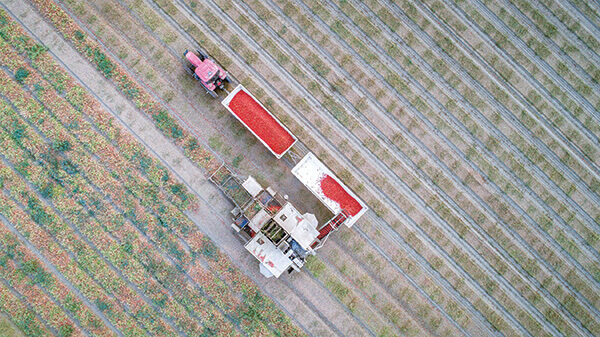
As far as the eye can see
Processing tomatoes are everywhere—in the supermarket, in your pantry, in the restaurant kitchen—and they wear many disguises. Tomato paste. Pizza sauce. Salsa. Marinara. Tomato soup.
But they all start in the same place: a field of vines loaded with oblong tomatoes. These are not for slicing into your next salad. Called processing tomatoes for obvious reasons, they are firmer with thicker skins than fresh market tomatoes so they can be harvested at their red, ripe peak and still transport well.
Their first stop is the cannery, where their freshness and nutrients are sealed in—ideally within two to five hours of harvest.
"The sealing is almost like a pause button that freezes that moment in time that they were at their peak ripeness," said Alec Wasson, Mulvaney's son-in-law, who works as the "chief tomato evangelist" for the Tomato Products Wellness Council. "You get that summer flavor, the summer peak of nutrition."
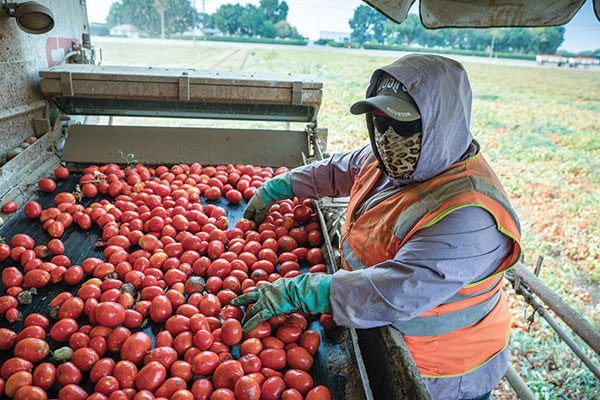
Key among those nutrients, Wasson said, is lycopene. That's an antioxidant found in tomatoes and many other red fruits and vegetables. It's good for sun protection, heart health and a lowered risk of some cancers, including prostate, according to Healthline.
"When you eat a tomato product like salsa or soup or paste or pasta sauce, you're actually getting two to three times more lycopene than you would in a raw tomato," Wasson said.
This is due to the heating process that makes the tomatoes shelf stable without the use of additives or preservatives, he explained. The cooking "breaks down the cell walls inside the tomato, which releases the antioxidant lycopene and makes it more bioavailable to our body."
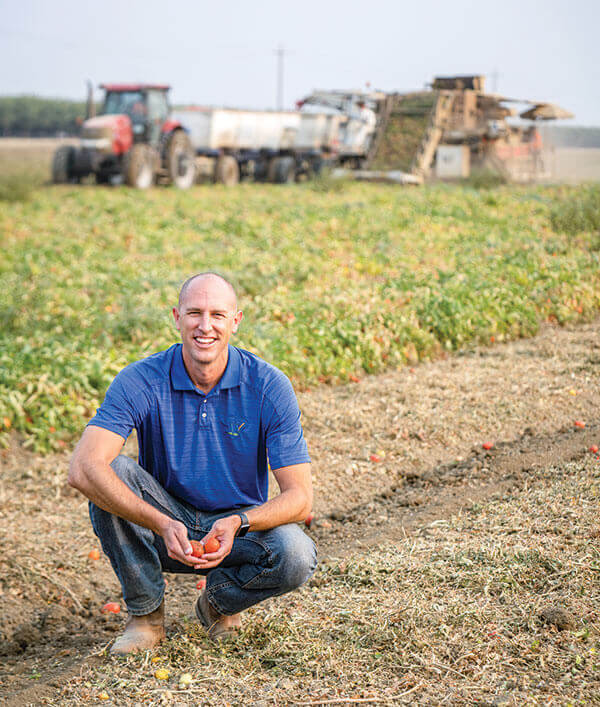
A real vine time
California farmers harvested 228,000 acres of processing tomatoes in 2019, according to the California Department of Food and Agriculture. Fresno County is the top tomato-growing county, with 74,600 acres harvested.
It's also home to Daniel Hartwig, whose employer, Woolf Farming, grows tomatoes and a plethora of other crops near Huron.
"The most important thing we need is a good soil," said Hartwig, who's also president of the Fresno County Farm Bureau. "The second-most important thing, then, is water availability, which is what's been really challenging these last couple of years. But we are able to grow a pretty decent crop based on what water we do have."
The tomato transplants—tiny plants grown from seed in greenhouses—are brought to the farm and planted, usually around March or April. It generally takes 120 days for the tomatoes to mature.
Because his tomatoes go to multiple canneries, shoppers are liable to find them everywhere.
"If you buy a bottle of Heinz ketchup, for instance, you have a really good chance of having had one of our tomatoes in there," Hartwig said, adding that his farm's tomatoes can also be found in pizza sauce, marinara sauce and stewed tomatoes, among many other items.
This is not your grandfather's tomato farm, either. Hartwig said people would be surprised by how much technology the farm uses to help bring costs down. That includes sensors in the soil that help farmers make irrigation decisions—"a lot of irrigation can get done from a phone or from our computer," Hartwig noted—or new machines that help farmers find and zap weeds.
So, what's Hartwig's favorite way to enjoy the tomatoes he grows?
"I have an Italian grandfather, so I love spaghetti for sure," Hartwig said. "Pizza is a great way as well."
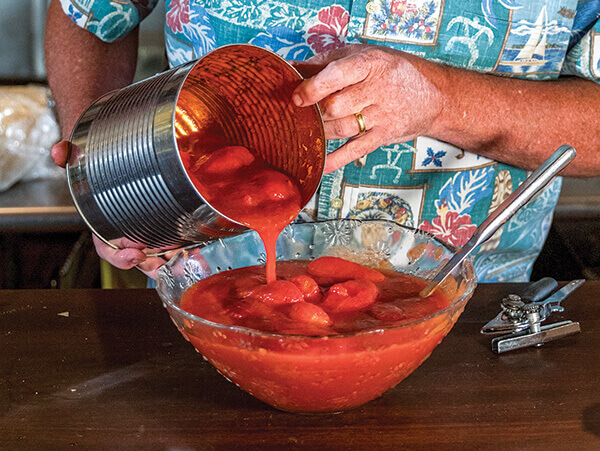
Fields of dreams
A formative experience for Mulvaney was when the New York City native came to California for graduate school at the University of California, Davis and found himself gazing upon "acres and acres and acres of tomatoes," as he put it. "It was an amazing thing."
"That's the thing that caused me to stay," he said. "Being in the center of the richest agricultural region in the world … and not only being able to value the product itself but meeting the farmers, the farmworkers, and seeing their place of work, being able to value the work that they do to feed America, makes me think that there's no better place to be a chef."
It all starts with the farmer, for whom Mulvaney has the highest respect.
"He walks out in the spring and looks at a plot of dirt and puts seeds in the ground, and says, 'This field, come September, is going to support my family for another year,'" the chef said. "It's a pretty big gamble—one that I admire a lot."

